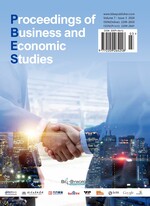Abstract
This article explores the impact of the three-dimensional cultivation mode on the development of the Suzhou tea industry, focusing on the diversified estimation of the value of output per acre and sales mode. It introduces the history and traditional cultivation practices of tea in Suzhou, as well as the current challenges and problems faced by the industry. An in-depth analysis was conducted on the overview and improvement plans of the three-dimensional cultivation mode, covering relevant technical methods. Based on this analysis, the impact of the three-dimensional cultivation on the value of output per acre was studied and predicted. Its potential and advantages were explored and compared with the effectiveness of traditional cultivation models. Additionally, the impact of the three-dimensional cultivation mode on sales was analyzed, examining its market adaptability and competitiveness, as well as its advantages in expanding sales channels and market coverage. The study also focused on the promoting effect of diversified sales models on the Suzhou tea industry, including direct consumption market development, tea processing product development and promotion, and the integration of tea culture and the tourism industry. To ensure sustainable development, the article evaluates the environmental impact, economic feasibility, social benefits, and farmer benefits of the three-dimensional cultivation model. Finally, the prospects for the development of the Suzhou tea industry were discussed, and the positioning and response strategies of the three-dimensional cultivation model were proposed.
References
Mao X, 2012, On the Development of China’s Cultural Industry. Modernization of Shopping Mall, 2012(28): 116.
Cheng S, 2016, On the Development of Suzhou Tea Culture and Creative Industry. Agricultural Archaeology, 2016(2): 119–121.
Wang H, Zhang J, 2011, Research Progress on Intercropping of Tea Trees. Fujian Tea, 33(4): 5–8.
Tao D, 2013, Development of Jiangsu Tea Industry. Agricultural Archaeology, 2013(2): 259–266.
Li J, You M, You S, 2022, Research Progress on Biodiversity Control in Tea Gardens. Journal of Applied Insects, 59(4): 710–725.
Xu L, Chen J, Yu L, 2014, Key Points of Tea and Persimmon Three-Dimensional Composite Cultivation Technology. New Countryside, 2014(9): 20.
Yang S, 2021, Research on Intercropping of Tea Based on CNKI Database. Rural Economy and Technology, 32(19): 66–68 + 76.
Wang Y, Li L, Ran L, et al., 2010, Investigation on Population Dynamics of Empoasca vitis (Gothe) of Different Planting Patterns. Southwest Agricultural Journal, 23(2): 413–415.
Ou L, 2014, Study on the Effect of Intercropping Green Seedlings in Tieguanyin Tea Garden. Modern Agricultural Technology, 2014(23): 169–170 + 173.
Zhou Q, 2013, Three Dimensional High-Yield and Efficient Cultivation Techniques for Anji White Tea and Hanging Gourd. Industry and Technology Forum, 12(17): 55–56.
Ye J, Zhuang L, 2008, Three Dimensional Cultivation Model of Intercropping High-Altitude Chili Peppers with Autumn Green Beans in Mountainous Tea Gardens. Modern Agricultural Science and Technology, 2008(5): 68.
Hang Z, Tong F, Xue X, et al., 2023, Research Status and Prospects of Mechanized Tea Picking Technology. China Journal of Agricultural Machinery Chemistry, 44(9): 28–35.
Wang C, 2023, Study on the Characteristics of Tea Garden Environment, Tea Tree Photosynthetic Physiology, and Tea Quality under Tea Medicine Intercropping Mode, thesis, Northwest A&F University.
Li C, Chen D, 2022, The Impact of Intercropping Chestnut and Tea on Tea Garden Production and Efficiency. China Tea, 44(5): 18–21.
Cheng F, Tu X, Zong Q, et al., 2020, Ecological Tea Farm Tea-Tree Intercropping Technique Regulation. Hubei Provincial Administration for Market Regulation, 2020-09-02(DB42/T 1609-2020).
